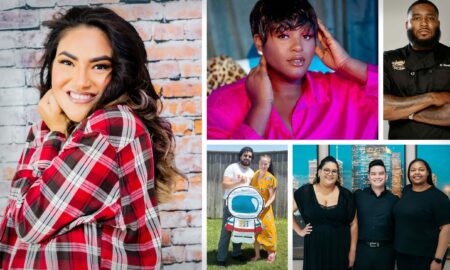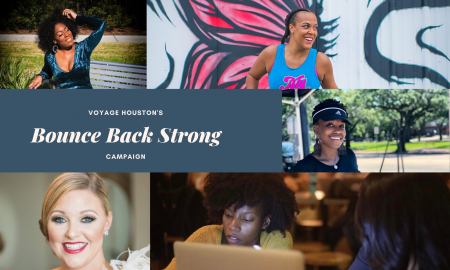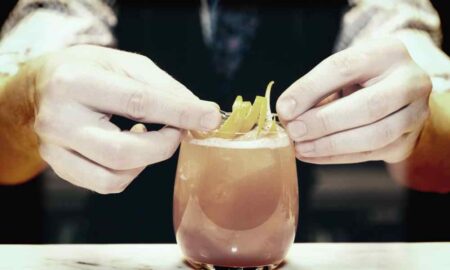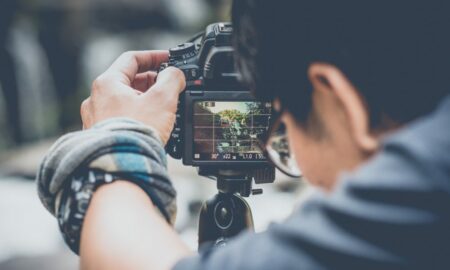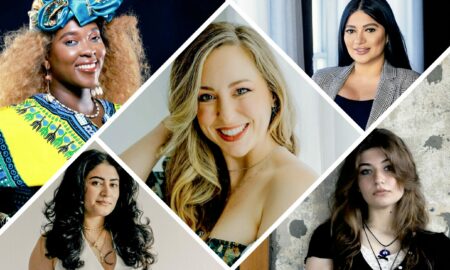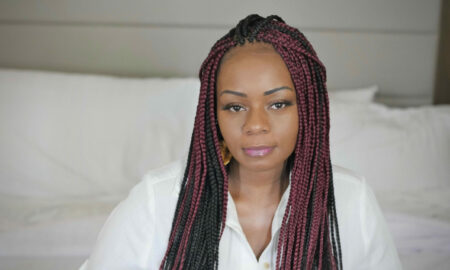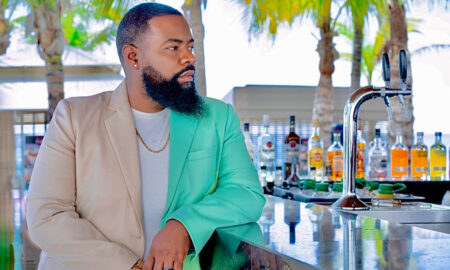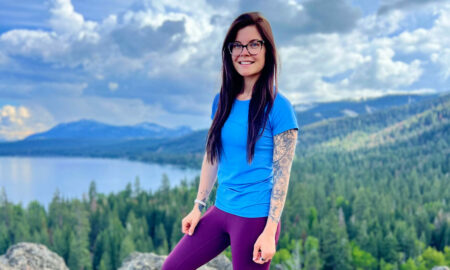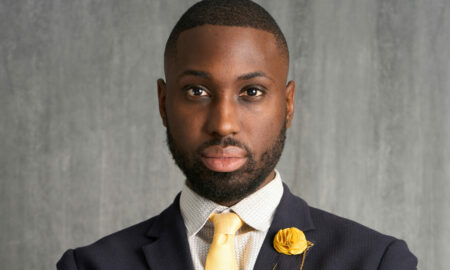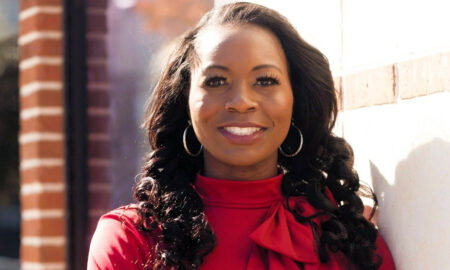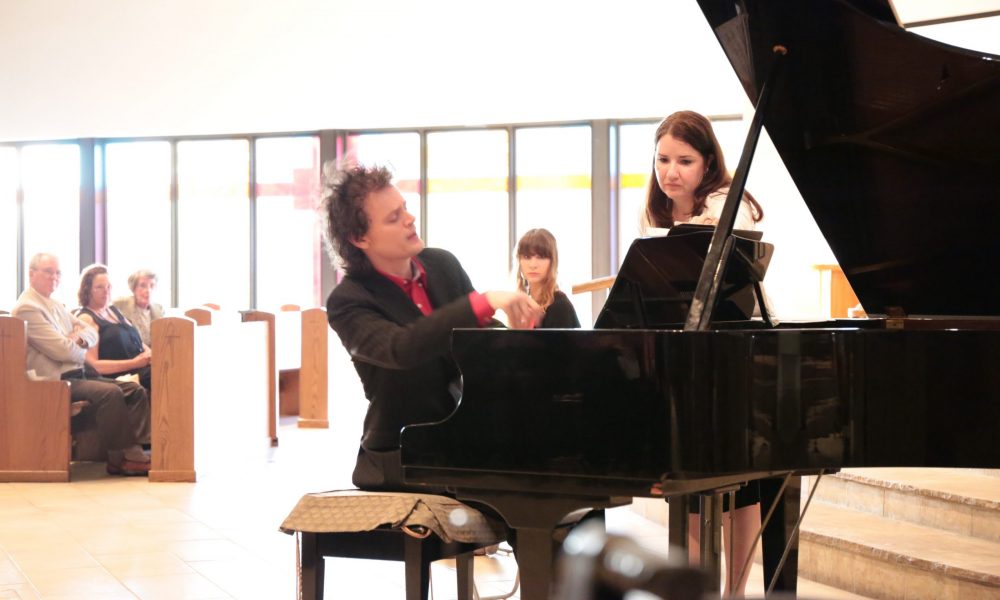

Today we’d like to introduce you to Adam Clay.
Every artist has a unique story. Can you briefly walk us through yours?
I grew up in a family surrounded by my folk songwriting father, and my guitar-playing mother. I discovered piano at my Grandmothers house, and eventually, they moved her piano to my parent’s house, and I became obsessed with it. I loved sitting down and creating music, Many times I would just play for hours to express some emotion I couldn’t get into words. I took private lessons from my mother, and then a neighborhood teacher when I passed up my mother in her piano abilities. In High School, I accompanied my choir and took a philosophy class, which opened my mind to many new ideas and ways of understanding connections between ideas. I was exposed to great films through my cousin while younger/in high school, such as Memento (still one of my top favorite films), and became fascinated with the art of M.C. Escher. I took piano lessons for about a year before I went to college with Dr. Dean Shank at Rice University, and got my Piano Performance degree at the University of Oklahoma on a music scholarship.
While in college, I was working on Prokofiev’s 3rd Piano Sonata, and I walked into the amazing art museum they had next to the practice rooms, and I seemingly out of nowhere had the idea to find a piece of art that represented the music I was working on. And so I wandered around, not expecting to find it, as that seemed a strange idea at the time. To my surprise, I found exactly what I was looking for in artist Romare Bearden’s “At Five in the Afternoon,” 1946. The visuals depicted a bullfight in Picasso-esque cubist fashion, however, the bull, the fighter, and the arena, while being recognizable, had no clearly defined borders, and they seemed to poke and stab into one another. The jagged lines and stark colors and bold statements were the same jagged musical lines, stark harmonic changes, and equally bold musical statements to be found in Prokofiev’s piece. At this point, I knew there was something deep and powerful about pairing art with music.
I learned a lot about Music History in classes, but on my own, discovered a number of lost composers, whose music had never been performed. Russian composers, who had labored under Stalin’s Regime in the Soviet Union had written completely original and powerful works that had never been recorded or performed. I became fascinated with this historical era and the music that came out of it, and read numerous books and collected numerous scores from the area, as my own sort of project. I also read the book “High Brow, Low Brow” which deeply influenced my desire to bring classical music to more people.
So when I returned to Houston, I created the Houston New Arts Movement – it was my ensemble and community of artists that actively discussed, created, and promoted a deeper understanding and appreciation for classical music. I had goals to reach audiences that had never heard classical music before with donated tickets, and make concerts that had depth to their stories and ideas, while remaining accessible to all: a bridge between high and low art.
My first concert with HNAM in 2010, was “Lost Voices,’ which featured Russian classical music from the era I mentioned previously. Artwork was created specifically for the event by one of my neighbors who was a photographer/artist, and my brother, who draws. I had a disparate connection of a friend who knew of the poet Yevtushenko, who worked with Shostakovich in Russia at the time period. He read Yevtushenko’s poem “Fears” in Russian, and I had someone translating in English at our first concert, so audience members could hear the sound of the language as well. The concert had historical, cultural, musical, emotional, political, and philosophical significance, and this is what I wanted out of an event: meaning on many levels.
The next big event I did, was a complete departure from the concert hall: taking classical music into the streets. I had a vision of music moving into a space and enveloping it – unbeknownst to the audience. I chose Terry Riley’s “In C” because of its ability to “drift” as music, just like we would move it through space, and that it was not prohibitively difficult, could use any number of musicians (as I had no larger team of musicians that were committed to my ideas at the time), the fact that an audience could hear part or all of the piece and still understand the music, and that it could shift peoples’ sense of time and their mood gradually and hypnotically. So I built a rolling platform with an engineer friend of mine in my garage for months, and eventually acquired a donated acoustic piano. I attached a piece of muslin to the back of it, on which my brother, who paints could spray paint art as we rolled the piano around in the performance, and I worked with my friend Sabra Yarbrough on coordinating dancers for the event. We also had traditionally classical and non-classical instruments as part of the performance. It was wonderful and exhausting and very satisfying on many levels.
After that wild departure from traditional concerts, I returned to a themed season of concerts with a few committed members to HNAM. I decided to go deep as opposed to wide and chose the theme of transformation for the season. I picked three composers whose music was transformative in my experience – music that cannot be forgotten easily, or whose power can easily be denied or dismissed. I wanted to create memorable concerts on a deep level. So the three composers were Beethoven, Shostakovich, and Schnittke. While the first two are more familiar and accessible (somewhat), Schnittke’s music expresses profound love, suffering, and transcendence. All of these were innovators in the realm of personal human expression in music. There was innovative art that people could take home and interact with (foldable paper art that changes as you interacted with it).
So, people enjoyed the first two concerts, and I realized the third had a problem. It contained ugliness AND beauty on a profound level. A number of people told me things such as “I get enough suffering in the rest of my life. Why come hear more?” Through later reflection, I understood myself better the purpose of this music I loved so much, and many didn’t understand: the music can build our compassion, by challenging us to enter another person’s suffering through their art. It also innovates in the realm of what can be expressed in music, and connects us human beings: we cannot deny another member of the human family’s experience simply because we find it too ugly. What I came to out of all of this, is that MORE context is needed.
The next concert series I did was entitle World Journeys, I figured, Houston uniquely celebrates many cultures, and is one of the most ethnically and racially diverse cities in the nation. So I based my season around this idea. We had music, art, food, and discussion from various cultures. One concert, the American Dream, explored American music and culture. I arranged Aaron Copland’s famous “Fanfare for the Common Man” for timpani and piano and created a video to go with the performance of scenes of America’s famous monuments. Poetry was read in between pieces of music that connected with each piece of music (Langston Hughes paired with Scott Joplin’s music, Thoreau’s poetry paired with Charles Ives’ music, and the like). We also had donated tickets for residents of the women’s shelter, Mission of Yahweh. It was great to do outreach like this.
I returned to composing myself in this season, by doing a concert of Houston composers, and got to connect with more Houston composers myself this way. I did video interviews with each of them and performed compositions of some of the Houston composers for the composers themselves (those who attended the concerts). We just finished our last season, which featured a work for eight cellos and Soprano, and rarely performed piano music of K.S. Sorabji (some of the most complexes ever written). Currently, we are planning our fifth season.
Please tell us about your art.
I essentially create “curated concerts”: concerts that you leave with thoughts about, because they engage the audience with not only music, but history, art, their own personal experiences, and deep psychological ideas that are in our collective unconscious. I think the underlying message of my work has to do with beauty being something powerful and sometimes unexpected – being sometimes painful and sweet at the same time. I think tears are one of the greatest responses to music you can have, and I really think that vulnerabilities connect us. We live in a world of many false representations of ourselves, including our social media profiles, and our lists of accomplishments and all of that. I think we need to see ourselves as able to be vulnerable: as able to be emptied of our own ideas and thoughts and emotions, and filled with those of another’s – to step into someone else’s experience to fully get them. We’re also terrified of that because it means letting go of ourselves for a bit, but if we loosen the grip around how we see ourselves, we can allow ourselves to grow – to be more. So listening to music is a wonderful way to really engage in someone else’s experience. Music can lift us to untold heights of beauty and destroy our shallow notions of what beauty was before we experienced certain music, and it can build our empathy for those who are suffering if the music expresses profound darkness and suffering. If we see music more as humanity speaking to us as a whole in often desperate tones, we will understand many more types of music and more out of music, and we will demand deeper music overall.
We often hear from artists that being an artist can be lonely. Any advice for those looking to connect with other artists?
Contact me – I am always happy to have a deep discussion about art, music, poetry, life… many things. I am always trying to think of new ways to communicate that to audiences. Also, if you see your art as communicating, then you must see the preparation of it as the meaningful loneliness that allows you to have the most meaningful connection when it comes time to perform/present your art to the world. Just remember, if you’re feeling lonely, its the calm before the storm of connection you should get when you put your art out in the world.
How or where can people see your work? How can people support your work?
People can see our work at our concerts, and increasingly on our social media pages, as well as our website. The Houston New Arts Movement (HNAM) is on Facebook, Twitter, Instagram and our website: www.artsmove.net. They can also sign up for our mailing list on our website. If you want to support our mission you can make tax-deductible donations on our website.
Contact Info:
- Website: www.artsmove.net
- Phone: (832) 819-4626
- Email: adamclay@artsmove.net
- Instagram: https://www.instagram.com/artsmove/
- Facebook: https://www.facebook.com/artsmove/
- Twitter: https://twitter.com/HoustonNewArts








Image Credit:
Photo Credit: Michael Stratigakis and Pin Lim
Getting in touch: VoyageHouston is built on recommendations from the community; it’s how we uncover hidden gems, so if you know someone who deserves recognition please let us know here.

